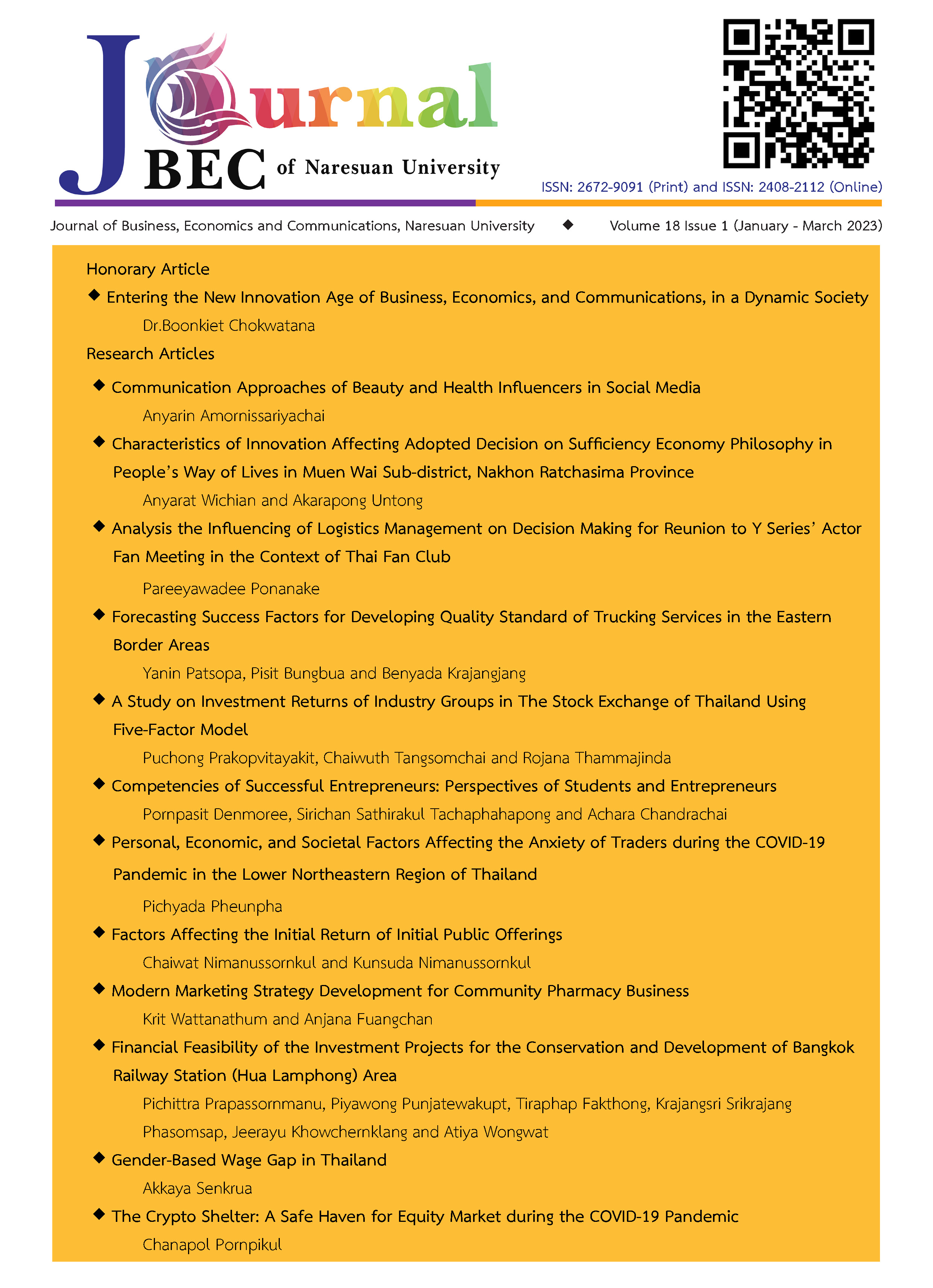A Study on Investment Returns of Industry Groups in the Stock Exchange of Thailand Using Five-Factor Model
Main Article Content
บทคัดย่อ
This research aims to examine the rate of return in eight industry groups on the Stock Exchange of Thailand (SET). Our data was collected from the monthly closing price of common stocks in the SET from January 2013 to December 2019, a total of 84 months, using a five-factor model. The five-factor model or the five-risk premiums factor is comprised of: (1) market risk premium, (2) size premium, (3) value premium, (4) profitability premium, and (5) investment premium. The above factors exert an effect on the increases and decreases of stock returns. Thus, to determine the rate of return, the premia factors must be included. In addition, a constant must be calculated to measure the excess return.
The study reflects that the five-factor model can explain the rate of return of industry groups well, especially in the industrials industry, financials industry, property and construction industry, service industry, and technology industry. Furthermore, the research investigates the excess return using the five-factor model to calculate the constant variable according to the Jensen method, with 0.05 statistical significance. The test shows that all eight industry groups do not have abnormal returns. It summarizes that the five-factor model can be efficiently and extensively used to explain the rate of return, hence no excess return.
Article Details

อนุญาตภายใต้เงื่อนไข Creative Commons Attribution-NonCommercial-NoDerivatives 4.0 International License.
เอกสารอ้างอิง
Fama, E. F. and French, K. R. (2015). A five-factor asset pricing model. The Journal of Financial Economics, 166(1), 1-22.
Foye, J. (2017). Testing Alternative Versions of the Fama-French Five-Factor Model in the UK. Journal of Business Finance & Accounting, 40(1), 172–214
Jensen, M. C. (1967). The Performance of Mutual Fund in the Period 1945-1964. The Journal of Finance, 23(2), 389-416.
Lintner, J. (1965). The Valuation of Risk Asset and the Selection of Risky Investment in Stock Portfolios and Capital Budget. The review of Economics and Statistics, 47(1), 13-37.
Markowitz, H. M. (1952). Portfolio Selection. The Journal of Finance, 7(1), 77-91.
Mesinee, K. (2017). The Efficiency Conparison Among the Capital Asset Pricing Model, Three-Factor and Five-Factor Asset Pricing Model Case Study: Thailand. Independent Study, Business Economics, Thammasat University, Bangkok.
Mossin, J. (1966). Equilibrium in a Capital Asset Market. Econometrica, 34(4), 768-783.
Sharpe, W. F. (1964). Capital Asset Prices: A Theory of Market Equilibrium under Conditions of Risk. The Journal of Finance, 19(3), 425-442.
Sharpe, W. F. (1990). Investment 4th ed. New Jersey: Prentice-Hall International Inc., 19, 720-726.
Talis Asset Management Company Limited. (January 8, 2018). Thai stock market conditions - December 2017. Retrieved November 23, 2019, from https://www.talisam.co.th/2018/01/thai-equity-market-dec-2017/


